Several days of snow have come to an end and the skies cleared just before sunset to allow the low sun to bring a fantastic glow to the Kachina Peaks. A few lingering clouds add to the dramatic effect.
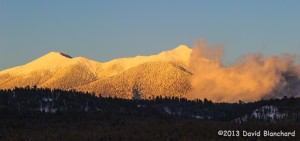
The last week of January proved to be a big snow producer on the Kachina Peaks with upwards of 40 inches being measured. Locally higher amounts were certainly possible. Here are a few images from a day of skiing.
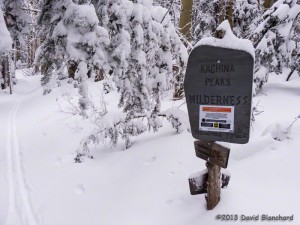
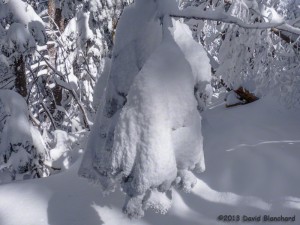

It’s been cold around these parts lately. How cold? Well, we’ve seen -24ºF in Bellemont, -19ºF in Tusayan, and -9ºF in Flagstaff. These are all northern Arizona communities that are used to the cold — but not for this many days in a row. This is the coldest 5-day period in Flagstaff in over three decades.
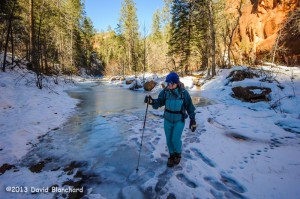
There are some benefits. With prolonged cold some of the streams in the canyons will freeze. With this in mind, we took a hike up West Fork Oak Creek. The trail was snow packed and icy. Wisely, we all had foot traction gear including instep crampons and microspikes.
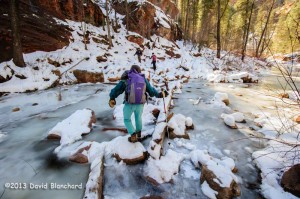
The trail crosses the creek numerous times and the first few crossings were tricky but doable. That is, the logs and/or stepping stones were ice covered but sure footing could be found using care and caution.

One of stream crossings, though, stymied us. For whatever reasons, the water and ice level had increased substantially in this location so that all the stepping stones were well under water and ice. And the flow of water had become concentrated along one side of the channel so that the ice was eroded. After studying it for awhile, we reluctantly agreed that the risk of crashing through the ice was too great. We turned back.
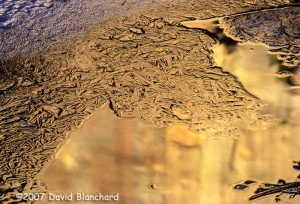
In previous years we had easily moved through this crossing and many others farther upstream including the “subway” passage. We had hoped to make it this far and, possibly, even farther upstream. It wasn’t to be.

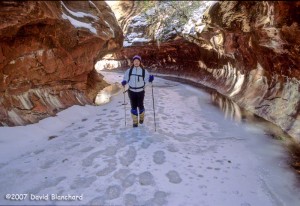
Still, it’s never a bad day when you are out hiking with no one else around except your friends in an environment not often experienced by most.
Edit: 01 Feb 2013 – fixed typos.
It seems that we get extraordinarily cold mornings on New Years Day. It was -17°F for a low temperature in Bellemont, Arizona today. Two years ago, on New Years Day 2011, it was -30°F. Both times we had fun tossing boiling water into the air and watching it freeze before it hits the ground.
Yeah, sure, folks up north do this all the time in the winter. But, remember, this is Arizona!
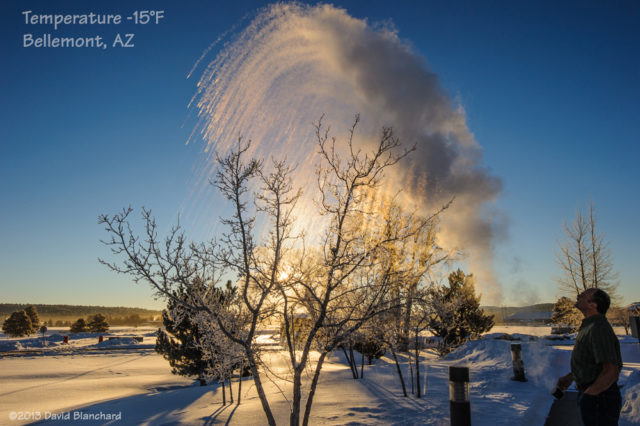
For a brief explanation on the physics of this process see the two links below.
Physics and Chemistry of Fresh Water
Which freezes faster, hot water or cold water?
And here’s a video from two years ago.
We’ve had several days of snow across northern Arizona with about 20 inches measured in Flagstaff — and lesser amounts in the lower elevations. Snow levels were low enough that Sedona recorded snow but little or no accumulation. That means that a few inches or more fell and accumulated in Oak Creek Canyon. When there is snow on the red rock the scenery can be amazing and worth photographing. Even if it’s cold outside.
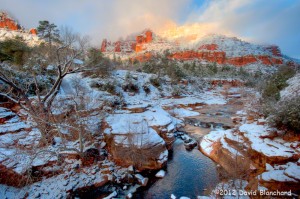
All things considered, it wasn’t too bad. Temperatures were in the mid-teens when I left Flagstaff and were in the mid-20s near Slide Rock State Park. This is much warmer than last year when I shot photographs at Slide Rock State Park.
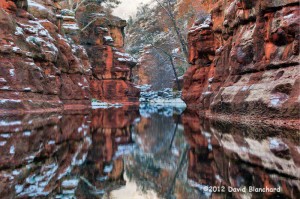
To add to the visual interest, there were clouds clinging to the upper walls of the canyon that caught the early morning sun.
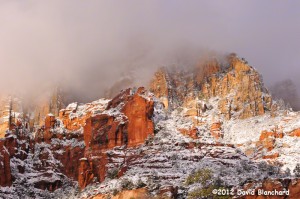
Because of the extreme dynamic range of light with dark shadows and brightly-lit snow I took multiple exposures and then experimented with HDR (high dynamic range) to tone map the results. Definitely a lot of fun but like many HDR images some of the results look a bit cartoonish. Nonetheless, presented here for your amusement.
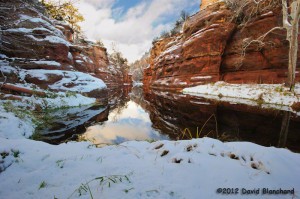
So, I’m glad I got up early and braved the cold. The photos were worth it. After I finished shooting, I headed to Indian Gardens Oak Creek Market for coffee and a bagel.